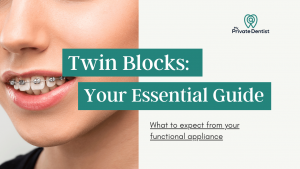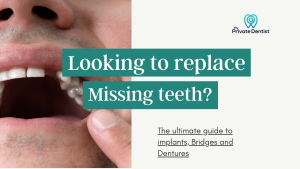What is it? | How is it done? | Is it right for me? | Advantages | Disadvantages | Cost | Longevity | How to look after it | Things to Avoid | | Whitening | Composite Bonding vs Edge Bonding | Edge Bonding vs Veneers | Finding A Dentist
What Is Composite Edge Bonding?
Composite Edge Bonding is a dental procedure that changes the shape of your teeth to improve their appearance.
It involves adding a tooth-coloured, composite resin material onto the edges of the teeth.This creates a more symmetrical, straight, and aesthetically pleasing look.
Although most patients are pleased with the results, not all cases are successful. It is important to consider your individual needs and discuss with a dentist if this composite edge bonding is right for you. I would highly recommend choosing a dentist with experience and a track record of successful results.
Composite bonding is the cosmetic procedure I’ve been asked the most about in practice over the last 5 years. I have written a comprehensive FAQ below to try to help you make the right decision.
What does composite edge bonding involve?

1. Check teeth: A dentist will carry out a full examination first. Cosmetic procedures should only be carried out if your teeth and gums are otherwise healthy, with no dental decay or gum disease.
2. Plan: To give you an idea of what the teeth will look like after the treatment, the dentist may do a trial smile, or digital design.
3. Whitening: If you would like to whiten your teeth, it is essential this is done before composite edge bonding. You cannot whiten composite fillings, and so you should whiten your teeth first.
4. Bonding: Your appointment is likely to last 1-2 hours, though can be longer depending on how many teeth are bonded. You will have your teeth cleaned, before composite is placed and contoured to the edges. After placement, the dentist will check aesthetics and function, making sure your bite is comfortable.
5. Review: You will have a review after 1-2 weeks, to ensure you are pleased with the results of your composite edge bonding. This appointment is a good opportunity for final refinement and polishing. You will be advised on how to look after your composite edge bonding.
Is composite edge bonding right for me?
Composite edge bonding is a fantastic treatment option for patients who want to improve the appearance of their teeth.
A suitable patient is one who:
- Visit the dentist regularly, and have healthy teeth and gums.
- Have uneven, chipped or irregularly shaped teeth, and would like to improve their appearance
- Are generally happy with the shade of their teeth, or have whitened them, but would like to make changes to the shapes of your teeth
- Have an even bite, or occlusion. The position in which your upper and lower teeth meet is very important in determining how well your composite edge bonding will last. Your occlusion can be made more favourable with braces to straighten your teeth first.
- Your teeth are well aligned. If your teeth are overlapped or crowded, you may consider having braces first. This may also reduce the amount of bonding you need to have, but treatment time is considerably longer.
- You don’t clench or grind. If you grind your teeth or have Temporomandibular Joint (TMJ) issues, there is a higher chance of failure . A night bite guard can be made to protect your composite edge bonding from chipping.
As with any dental procedure, you should consider all the benefits and risks before you decide to have composite edge bonding.
Advantages of composite edge bonding
👍 A simple option to improve the appearance of your teeth
👍 Instant results, after a single treatment visit to the dentist.
👍Quick treatment, appointments for composite edge bonding are usually 1 – 2 hours
👍 Painless procedure, and no injections needed
👍 No drilling to your natural teeth, unlike veneers or crowns.
👍 Natural looking results
If you’re unhappy with your composite edge bonding, it can be reversed. However, removal of composite may cause some mild damage to your natural teeth.
Disadvantages of composite edge bonding
👎 Composite resin material is not as strong as natural teeth
👎 Over time, composite can chip and require repair
👎 Picks up stains more easily than natural teeth, though can often be polished away. Composite resin will become discoloured with regular coffee/tea drinking, and smoking
👎 Requires maintenance: regular dental visits, good oral hygiene, a healthy diet and not smoking.
👎 Lasts 3-10 years, and then may need redoing. Alternatives may last longer.
How much does composite edge bonding cost?
Prices range from £150 – £450 per tooth for composite edge bonding. This can vary depending on the skill of the dentist, and location.
How long does composite edge bonding last?
The treatment usually lasts between 3-10 Years. They can last longer if you look after them well, with regular dentist visits and good oral hygiene.
They do not last as well if you clench and grind your teeth, or have interferences in your bite, as this can cause them to chip. Your dentist will assess your bite, and advise if the way your teeth meet may cause composite edge bonding to fail.
How to look after composite edge bonding?
Keep your gums healthy and teeth clean by brushing with an electric toothbrush twice a day, and flossing regularly.
Maintain regular dental visits,so the dentist can check for damage to teeth and composites, and remove any staining.
Always wear a night bite guard to sleep if you grind your teeth (Bruxism).
Wear a sports mouth guard if you play contact sports
Foods to avoid with composite edge bonding
Foods with artificial colourings, and drinks such as tea, coffee and red wine can cause staining. Try to avoid hard foods like boiled sweets as this can lead to chipping. It is advisable to cut up fruits like apples rather than bite straight into them.
Habits to avoid with composite edge bonding
Habits such as pen chewing, nail biting, and using teeth for cutting sellotape can put pressure on the composite resin and cause it to break.
Avoid smoking, as this causes staining around the margins, and can look unsightly.
Can you repair composite edge bonding?
It is possible to repair a chip, but not always straightforward. It’s important to find out the cause of the composite fracture, to try to prevent it happening again. Chips often occur as a result of problems with your bite, grinding, or a knock to the tooth. Your treating dentist will smoothe down all or some of the remaining composite resin, and replace it with a new restoration.
Whitening and composite edge bonding
It is very important that if you would like to whiten your teeth then to do that before you have this treatment. Whitening bleach works only on natural enamel and won’t change the shade of the composite.
Composite Bonding vs Composite Edge Bonding
Composite bonding and composite edge bonding techniques aim to improve the appearance of your natural teeth. Composite bonding is when the resin material covers the whole surface of your tooth, whereas in edge bonding the composite is only applied to the edges of your teeth.
Composite bonding achieves more uniform looking teeth, as the entire surface of your tooth can be reshaped. This is a good option if you have defects on the front surfaces of your teeth, or if you’re not able to whiten them sufficiently.
With composite edge bonding, composite is added only to the margins of your teeth, and the front surfaces are left naturally. The edge bonding may overlay slightly to enhance bulk and bond strength, but this is kept as minimal as possible.
In my opinion it is best not to cover over a natural tooth surface unless necessary. Natural teeth have more character than the composite, and a natural looking smile is usually better.

Composite Edge Bonding vs Veneers?
Both are good options for improving the appearance of your teeth. It is important to understand the difference before you decide which is the best for you.
The biggest difference is that whereas composite edge bonding requires no drilling, veneers do. Veneers require preparation of the front and edge of your teeth, and so is irreversible.
Composite edge bonding can be done in 1 visit, but veneers require 2 appointments. Appointment 1 is tooth preparation, and appointment 2 is placing the veneer on the tooth once it has been made.
Veneers last longer and require less maintenance than composite edge bonding [1]. Porcelain veneers are stronger than composite resin, and less likely to fracture.
Veneers can mask larger defects on teeth as they cover the front surface. Composite edge bonding is when composite is applied only to the edges and so is a good option if you have mild wear or chips on your teeth.
Veneers are more expensive than composite edge bonding, and can cost between £800-£1000 per tooth.
How many teeth are treated with composite edge bonding?
How many teeth you have bonded is an important decision to make with your dentist. It is common to have the treatment on the six front upper teeth, canine to canine. However some smiles may benefit from having eight or ten teeth bonded. This can be discussed at the consultation and planning stage.
Finding a dentist for composite edge bonding
Even if you have a regular dentist, you may consider looking elsewhere for cosmetic procedures, such as composite edge bonding.
Important things to consider when looking for a dentist:
- How experienced is the dentist in composite edge bonding: All dentists have different things they’re good at, and some may have a lair for cosmetic work.
- Has the dentist had extra training in cosmetic procedures. Many dentists attends courses to improve their skills
- Does the dentist have a portfolio of their work: You may want to see examples of other patients that have had composite edge bonding, and see if you like the results. Some dentists show 5 year reviews of their work.
- Can the dentist provide a mock up or digital design: This will give you and indication of what it will look like before you start
What should I do now?
If you’re interested in composite edge bonding, find an experienced cosmetic dentist today who can help you achieve the smile of your dreams.




2 Comments
Lana
February 16, 2024Can edge bonding be refined/adjusted after it’s been done?
My front teeth are too long I hate it! – I’ve lost my pretty smile it doesn’t suit me.
Dr Jarri Amini
February 19, 2024Hi Lana. Yes your edge bonding can be adjusted/refined. The dentist who provided the treatment would be more than happy to do this for you I’m sure. They would usually use a polishing disc to do so, possibly a little at a time until you’re happier with your smile.